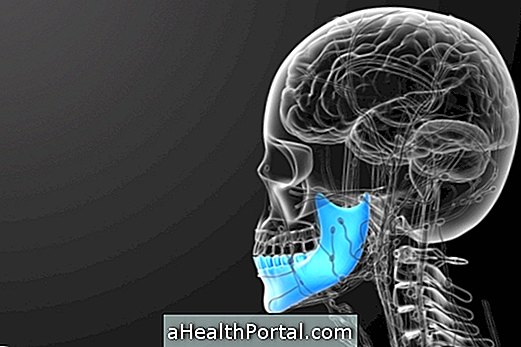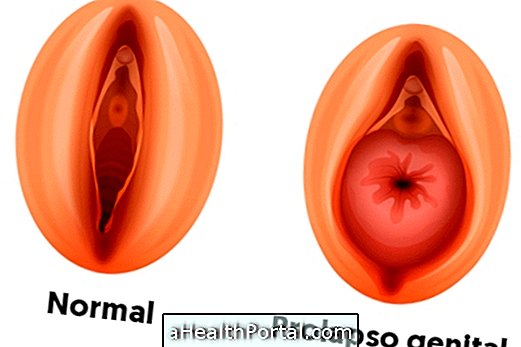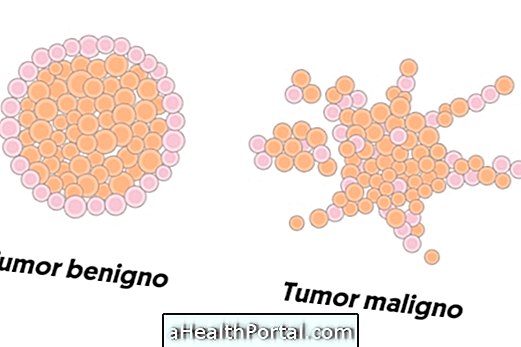The main types of diabetes mellitus are Type 1 and Type 2, which present some differences, such as in relation to their cause, and may be autoimmune, as in the case of Type 1, or associated with genetics and life habits, such as happens in type 2.
These types of diabetes can also vary according to the treatment, which can be done with the use of medications per pill or with insulin application.
There are, however, other variants of these types of diabetes, which are Gestational Diabetes, which occurs in pregnant women due to the hormonal changes of this period, Adult Autoimmune Latent Diabetes, or LADA, and the Maturity Onset Diabetes of the Young, or MODY, which mix characteristics of diabetes tpo 1 and 2.

So, to better understand the difference between type 1 and 2 diabetes, and the other variants, it is important to know how each disease develops:
1. Type 1 Diabetes
Type 1 diabetes is an autoimmune disease, in which the body wrongly attacks the cells of the pancreas, causing the destruction of the cells that produce insulin. Thus, lack of insulin production into the bloodstream causes glucose to accumulate in the blood circulation, which can cause harm to various organs, such as kidney failure, retinopathy or diabetic ketoacidosis.
This disease may not cause symptoms, however, in some cases it may appear:
- Frequent urge to urinate;
- Excessive thirst and hunger;
- Loss of weight without apparent cause.
This type of diabetes is usually diagnosed in childhood or adolescence, because that is when this immunity changes.
Typically, treatment for type 1 diabetes is done with daily insulin injections, in addition to a low sugar and low carbohydrate feed. Learn what food should be and what you should and should not eat in diabetes.
It is also important that patients maintain regular exercise, under the guidance of an educator, to help control sugar levels and maintain a regulated metabolism.
2. Type 2 Diabetes
Type 2 diabetes is the most common type of diabetes, caused by genetic factors along with poor eating habits, such as excessive consumption of sugar, fat, sedentary lifestyle, overweight or obesity, which cause defects in the production and action of insulin in the body .
Generally, this type of diabetes is detected in people over 40 years, as it is developed over time and, in the early stages does not cause symptoms, causing damage to the body in a silent manner. However, in severe and untreated cases, it may cause the following symptoms:
- Constant sensation of thirst;
- Exaggerated hunger;
- Frequent urination;
- Loss of weight without apparent cause;
- Difficulty of wound healing;
- Blurred vision.
Before setting up diabetes, the person has usually had a period of high blood glucose for several months or years, which is pre-diabetes. At this stage, it is still possible to prevent the development of diabetes, with physical activities and diet control. Understand how to identify and treat pre-diabetes to prevent diabetes from developing.
Treatment for type 2 diabetes is done with medicines to control blood glucose, such as metformin, glibenclamide or gliclazide, for example, prescribed by the general practitioner or endocrinologist. But depending on the patient's health status or worsening of blood sugar levels, daily insulin use may be necessary.
In addition to medications, a controlled diet in sugar, carbohydrate and fats, in addition to regular exercise, are essential for correct disease control and healthful aging with fewer medications. Learn more about the treatment and consequences of type 2 diabetes.
Summary of the differences between Type 1 and Type 2 diabetes
The table below summarizes the main differences between these two types of diabetes:
| Type 1 Diabetes | Type 2 diabetes | |
| Cause | It is an autoimmune disease, in which the body attacks the cells of the pancreas, which fail to produce insulin. | Genetic predisposition in people who have risk factors, such as overweight, sedentary lifestyle, diet with excess carbohydrates, fats and salt. |
| Age | Common in children and adolescents, usually, from 10 to 14 years. | Most often, in people over 40 who have gone through a pre-diabetes period. |
| Symptoms |
The most common are: dry mouth, excessive urination, too much hunger, weight loss. | The most common are: weight loss, excessive urination, tiredness, weakness, change in healing, blurred vision. |
| Treatment | Use of insulin divided into several doses or insulin pump, daily. | Use of antidiabetics in tablet, daily. Insulin may be needed in more advanced cases. |
Diagnosis of diabetes should be done with blood tests that identify excess glucose in the circulation, such as fasting glucose, glycated hemoglobin, glucose tolerance test, and capillary glycemia test. See how these tests are done and the values that confirm diabetes.
3. Gestational diabetes
Gestational diabetes arises during pregnancy and can be diagnosed on glucose testing after 22 weeks of gestation and is also caused by dysfunction in the production and action of insulin in the body.
It usually occurs in women who already have a genetic predisposition or who have unhealthy eating habits, such as eating too much fat and sugars.
The symptoms of gestational diabetes are similar to those of type 2 diabetes and its treatment is done with adequate diet and exercise to control diabetes, as it tends to disappear after the baby is born. However, in most cases, the use of insulin is required for proper blood glucose control.
Learn more about the symptoms of gestational diabetes, its risks and how to treat it.
4. Other types
There are also other ways to develop diabetes, which are more rare and triggered for different reasons. Some of them are:
- Autoimmune Latent Adult Diabetes, or LADA, is an autoimmune form of diabetes, but it happens in adults. It is generally suspected in adults with type 2 diabetes who have a very rapid impairment of pancreatic function, and who need to use insulin early;
- Maturity Onset Diabetes of the Young, or MODY, is a type of diabetes that happens in young people, but it is milder than type 1 diabetes and more like type 2 diabetes. Thus, it is not necessary to use insulin early on . This type of diabetes is becoming increasingly common, due to the increase in the number of children with obesity;
- Genetic defects in the action, which is produced by the pancreas with changes that interfere in its action;
- Pancreatic diseases, such as tumor, infection, or fibrosis;
- Endocrinological diseases, such as Cushing's syndrome, pheochromocytoma and acromegaly, for example;
- Diabetes triggered by the use of medications, such as steroids.
There is also a disease called diabetes insipidus which, despite having a similar name, is not diabetes, being a disease related to changes in hormones that produce urine. If you want to know more about this disease, see how to identify and treat diabetes insipidus.























